Soundcheck: Dog Log, Poor Heart, work on Run Like an Antelope
SET 1: Sample in a Jar > The Curtain > Ha Ha Ha > Julius, NICU > Bathtub Gin, Rift > Fast Enough for You > The Lizards, Fire
SET 2: Cars Trucks Buses > Tweezer -> Makisupa Policeman > Run Like an Antelope > Scent of a Mule, Free, Strange Design, Amazing Grace
ENCORE: Harry Hood
Trey teased Call to the Post in Scent of a Mule. This show is available as an archival release on LivePhish.com.
- Nov 30, 2019: Phish - Providence, RI
- Nov 30, 2014: Trey Anastasio Band - Richmond, VA
- Nov 30, 2005: Trey Anastasio Band - Portland, OR
- Nov 30, 1997: Phish - Worcester, MA
- Nov 30, 1996: Phish - Sacramento, CA
- Nov 30, 1994: Phish - Olympia, WA
- Nov 30, 1992: Phish - Pittsburgh, PA
- Nov 30, 1991: Shockra - Port Chester, NY
- Nov 30, 1991: Phish - Port Chester, NY
- Nov 30, 1990: Phish - Keene, NH
- Nov 30, 1989: Phish - Boston, MA
This show was part of the "1995 Fall Tour"
Show Reviews
Review by n00b100
Review by TheEmu
Review by TweezingSpaceRanger
Review by Brandonclick77
Review by JonBaker
Review by spreaditround
SET 1: Sample in a Jar > The Curtain > Ha Ha Ha > This section sounds great, nice energy to get the show rolling.
Julius: Face melter, big time!
NICU: Standard. >
Bathtub Gin: Standard.
Rift: Man, this one sounds GOOD! So fast and clean. >
Fast Enough for You: Trey completely botches the opening lyrics and Page bails him out. Other than that, this version is perfection. Check out Trey’s solo – it might give you goosebumps like I just got. >
The Lizards: Ahhhhhhhhhhhhhhhhhh!!!
Fire: Seems like Page and Trey were on different wavelengths at the end of this one. Trey was clearly done raging and not sure if Page just didn’t hear that? But he just kept banging away on the baby grand while Trey is trying to wind it down but not embarrass him. Weird. I don’t remember this at the show at all by the way.
SET 2: Cars Trucks Buses: Standard. >
Tweezer: The theme they create that starts at 5:34, I love it. I’ve listened to this one so many times, it’s instantly recognizable, like an old friend. The peak that they hit at 9:20, aww yeah! It’s a quick hitter but leads to much more. After this they are diving into a dissonant space. By 10:44 they are coming out of that dissonance as Page leads the way banging away on the baby grand. This goes on through 11:30. Here things are getting very herky jerky and at 11:52 here come some amazing Trey effects. Trey starts WAILING at 12:40. By 13:30 Page has wrested control back his way making bold moves on the baby grand. At 13:56 the baton is passed back to Trey. A new theme is realized here at 14:06 and by 14:21 the speed is ramping up. At 15:02 Page opts for the organ (sorry not sure specifically what he is playing here) and within 90 seconds or so this finds the band for a brief time in a heavy metal sounding jam but then just as quickly is out of that and just rocking out. At 17:50 intent is made to wrap up and the original Tweezer chords are being played prominently. 18:50 it becomes known that this is likely headed for Makisupa but they continue to play around with it. The funk is VERY deep at this point. 19:30 it’s a no brainer and you can hear Trey say YEAH ->
Makisupa Policeman: Wow!! My 22-year-old mind was completely blown trying to process what just happened. Woke up this morning, TEA. Followed by nerdy laughter (Page?). Trey nods for Antelope at 5:43. They develop this for nearly a whole minute! >
Run Like an Antelope: Check out the sync that Page and Trey get locked into at 6:31, effortless wouldn’t accurately describe how good this is and how they could do this on the fly in the middle of one of the best Antelopes of the tour. First peak at 6:45 and shortly after that sounds just a bit like Buried Alive. 7:41 is just red hot, scorching Trey. Check out Trey right before the Rye Rye Rocco – 8:21 way high up on the neck – listen to that run he plays – it’s the little things that make the legendary versions legendary – stuff like this! >
Scent of a Mule: Not my cup of tea. It’s charted but it feels like 85% of 95-96 version are charted I am sure that is an exaggeration but that is what seems like reality to me?
Free: Sounds like every other one from 95. No offense. Recall it being a lot of fun in person.
Strange Design: Standard.
Amazing Grace: Standard.
ENCORE: Harry Hood – This one goes along pretty ordinarily to my ear. You get your first false, brief peak at 12:53. Trey is having an absolute celebration as he is firing off all kinds of gorgeous licks in the 13:20’s and :30’s. The real deal comes in at 14:09. I don’t want to be that guy…but – based on many reviews I feel like most have a higher opinion of this Hood than I do and I have attendance bias. It was amazing but on tape there are plenty better just from this tour.
Summary: Solid first set. The goods are delivered in the second set with an all-time Tweezer and great Makisupa and an all-time Antelope and a very good Hood. Just a great, great Thursday night in Dayton. Phish LOVES my home state of Ohio. This is known. I would rate this as a 4.4 out of 5 all day long. The drive back to BGSU was an uneventful two hours. A great night for sure and even made it to all my classes the next day!
Review by The_Ghost
There is not enough love for this show's first set. I'd almost recommend The Lizards for nomination to the jam chart. This is one of the best played versions I've listened to.
There should be a lot more interest in this show.
Review by JCT76
Review by deceasedlavy
Add a Review

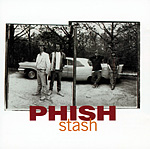
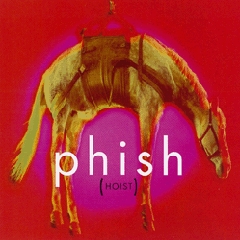
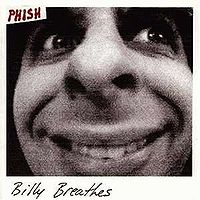
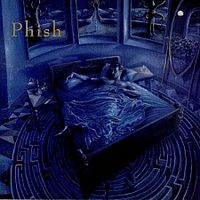
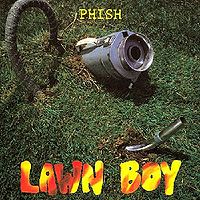

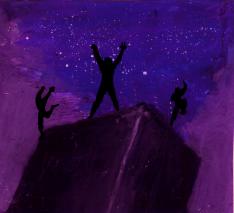

 The Mockingbird Foundation
The Mockingbird Foundation
Review by danielplainview
There's not much new to add to the reviews but I would like to reiterate for those who have not heard this - the Tweezer -> Makisupa Policeman -> Antelope is a one-two-three punch that (in my opinion) musically captures everything that was happening to (and is great about) Phish in the Fall 1995. This Tweezer is the early predecessor of the 12/02/1995 version which occurs just two amazing shows later in as many days. While the New Haven Tweezer is essentially an exposition on tension and release, charging towards an explosive climax before dissolving into a breakdown of the theme and rhythm, this Dayton version settles into a catastrophic major-key theme early which is repeated, and elaborated upon before submerging itself in disorienting, tension and release. Emerging from the tension, the theme is repeated with Trey shifting towards a major resolve on every third downbeat, and then the sixth; when effective - as it is in this version - it can literally make you feel as if you being punched in the stomach.
Because the nature of this music is so forward-moving in feeling, these themes are elaborated upon but must change before feeling stale - a final resolve before the *first* build features Trey sustaining a single note while Page provides the melody's climax and Mike + Fish keep time (incredibly impressive). This would be a contender already even if it dissolved into a breakdown and merged into Antelope at this point, but because its Phish - it moves forward into the ether, dissolving once more into tension and release, and while the major-key theme still exists, it is getting harder and harder to pick out of the noise.
What happens next is hard to describe (and must be heard) and it is in my humble opinion the high-water mark of Phish v.1.0-c.1995. Essentially, the music speeds up and breaks down, the tension and release is still there but it somehow more spacious; more mechanical / factory sounding, almost. Trey provides some awesome improvised chord progression while Page works the ivories. Suddenly - a shift. Remember how I said Mike + Fish have kept nearly perfect time? The band becomes one, during this. Everyone locks into a double-kick drum rhythm, Page hammers two low notes on the downbeat and Trey leans on the guitar. The music builds into a You Enjoy Myself "AHHHHHHHHH" moment (slower though, at first) until it explodes; Trey's guitar physically goes no higher and Fish speeds things up to match Trey resolving the full-band build into a solo that is beautiful and climatic.
And this show continues - and the Tweezer builds again in a different, but no less firey direction, then dissolves into a breakdown of the Tweezer theme which, believe it or not, blends seamlessly into Makisupa. And OK, so then, once the beauty of Makisupa is finished (complete with some really pretty sounding 95ish sustains) you are punched again in the stomach by an absolutely blistering Antelope that does not slow down even for a second.
One more note from this show: Harry Hood. It is beautiful, blissful and perfect. This is a favorite set of mine. As I tried to illustrate, the band worked together as one unit and the breakdowns, tension, release, climatic build, soaring solos by all members, not just trey plus rhythmic perfection. It was everything they had worked on achieving by Fall 1995 and is the foundation for one of the best months in Phish history - December 1995.
Things would be so much different, but none-the-less equally astounding, by the time they returned to the Nutter in Dayton in December 1997.